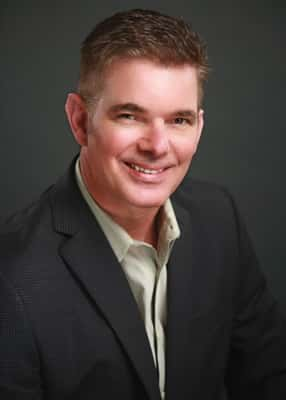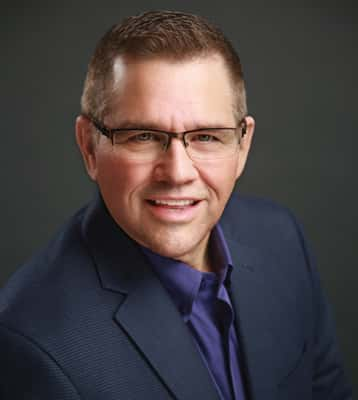In an era of near record employment, and in a country enjoying the longest economic recovery in its history, workers are in high demand and short supply.
As businesses and organizations seek to recruit the best and brightest from a limited pool – and job-seekers sort through multiple employment offers—it’s important not to lose sight of the one thing that probably has more impact on eventual success than anything else: company culture.
More often than the level of pay, it’s the work environment and an organization’s values and behaviors—its culture—that determines employee recruiting and retention, plus a healthy bottom line.
Culture defined
“Every company has one, whether [it’s] good or bad,” says Andrew McNeil, principal and senior benefits advisor at Arrow Benefits Group in Petaluma, which provides benefit programs for more than 1,400 employer clients in California. “If you have two people, you have a culture. How you live and work in it defines it.
“Organizational culture is the shared set of values, standards and behaviors,” says Stacy Nelson, associate vice president of human resources for Pacific Union College in Angwin. “Some call it the personality of the organizational.”
And according to Scott Ormerod, partner at Leap Solutions Group, Inc., a Santa Rosa-based business management consulting firm that focuses on organizational development, recruiting, and human resources, culture “is what starts at the front door and should be evident when people walk in. Let’s say I have a great job in a wine tasting room, and you show up as a stranger and I convert you to a wine club member because I was so excited about my product,” Ormerod explains. “My company’s culture should be wrapped around you like a warm coat.”
Hire for fit
 Not taking organizational culture into account when recruiting new employees is a major mistake, according to North Bay recruitment firms. “Employers are often short sighted by hiring individuals with the right background and experience, but forget about cultural fit,” says partner Chuck McPherson, also of Leap Solutions Group (LSG). “That’s the difference between [LSG] and say a staffing agency. We look for a cultural fit. We visit the work environment and interview the key people they will be working with and for. In other words, we commit to a fit, versus other agencies that get an order, throws it out to a sourcing person and gets paid to put a butt in a seat. However, it may not be the right cultural butt.”
Not taking organizational culture into account when recruiting new employees is a major mistake, according to North Bay recruitment firms. “Employers are often short sighted by hiring individuals with the right background and experience, but forget about cultural fit,” says partner Chuck McPherson, also of Leap Solutions Group (LSG). “That’s the difference between [LSG] and say a staffing agency. We look for a cultural fit. We visit the work environment and interview the key people they will be working with and for. In other words, we commit to a fit, versus other agencies that get an order, throws it out to a sourcing person and gets paid to put a butt in a seat. However, it may not be the right cultural butt.”
He also believes job applicants should interview a potential employer just as much as the company is interviewing them. “Caution should be taken with candidates who have no questions for potential employers,” he says. “For example, if they’re not asking about the work environment, the vision of the company, the team the work with (aka the culture), this could be a red flag. Some candidates are only asking questions about pay, vacation and other benefits, which is okay to ask at some point, but they’re not lead questions to understand how they would personally be successful in the environment.”
One of McNeil’s favorite culture-driven companies is Zappos.com. He and Rosario Avila, senior benefits advisor and head of Alianza, Arrow’s Spanish-speaking benefits program, have visited Zappos’ headquarters in Las Vegas to learn more about how they “operate, innovate and thrive.” Hiring right is one of the big reasons for its success, McNeil says.
“Applicants go through numerous interviews and evaluations. When the person is hired and completes the training, Zappos will offer them a few thousand dollars to quit on the spot. This gives the new employee an attractive out, though we’ve been told few people take this offer,” McNeil explains. “Zappos is intentional about who they hire to protect their company culture.” One of McNeil’s favorite quotes about culture is from Zappos’ CEO Tony Hsieh during a presentation Hsieh gave in Las Vegas, when he said, “We’ve actually passed on a lot of really smart, talented people that we know can make an immediate impact on our top or bottom line, but if they’re not good for the company culture, we won’t hire them for that reason alone.”
While he admires Zappos’ culture, McNeil notes that he would not operate well in it. He declined to elaborate as to his specific differences, laughingly stating that “when I tried to explain it once, I looked like a complete ass.”
The Exchange Bank way
One North Bay firm—Exchange Bank—was cited by McNeil as a great example of company culture. “They are extremely active in the community, they do things right and turnover is low,” he says.
Lori Zaret is Exchange Bank’s senior vice president of human resources. She points to the bank’s history (129 years and counting) and its dedication to community service and youth. A prime example is the Doyle Scholarship fund at SRJC, established by Exchange Bank’s cofounder Frank Doyle upon his death, which stipulated that the dividends from his 50.44 percent of common stock would continue to fund his legacy and ensure that Exchange Bank remained a locally-owned community bank in perpetuity. Since 1948, the Frank P. Doyle and Polly O’Meara Scholarship Fund has provided more than $83 million to more than 132,000 students.
“Hiring for fit is so important,” Zaret says. At Exchange Bank, community service is a key part of the culture. “There is an expectation that all officers will be community leaders—volunteering to sit on boards of nonprofits and participating in community initiatives. You can’t throw a rock too far in this community without hitting a representative from Exchange Bank,” she says. The bank is up front about its commitment to community work—a historical video is shown at new employee orientation that explains the bank’s deep roots in Sonoma County. If serving the community “doesn’t float your boat, then we may not be a good fit for you,” she says.
Bank employees, regardless of rank, volunteer to raise money through their own fundraising efforts and have given more than $100,000 to local charities each year. “Giving back is an integral part of our culture. Our employees love having the opportunity to give back to the community by fundraising and volunteering during work hours as well as on their own time.”
Another part of the bank’s culture, says Zaret, is that we are quiet about our giving. “We don’t seek out the spotlight for all we do because of the strong sense of humility that permeates our corporate culture,” she says. “It’s not about the photo op, but about making a difference in the community we serve. That’s just who Exchange Bank is.”
Culture within a culture
 Just as people have different cultures based on heritage, so do companies and organizations. High-tech cultures are vastly different from the construction industry, for example. Academic cultures are nothing like big box store operations. And then there are cultural considerations within work cultures.
Just as people have different cultures based on heritage, so do companies and organizations. High-tech cultures are vastly different from the construction industry, for example. Academic cultures are nothing like big box store operations. And then there are cultural considerations within work cultures.
“If you’re an employer with different demographics, you must be mindful of it,” says Avila. “Most companies in the North Bay are not huge. It’s a good idea for employers to get to know everyone on a personal level, so employees know they are heard,” regardless of personal background. McNeil notes that multicultural employers have to “build their culture around multiple backgrounds” and sometimes it is something as simple as having annual health care open enrollment sessions in both Spanish and English.
Avila recalls a recent Alianza client who held an open enrollment meeting at 6 a.m. for its Spanish-speaking employees. Management attended. “At the start, because it was so early, there was a lot of grumbling from the employees. But when it was over, they were happy and felt part of the team because they were talking with other non-Spanish speaking employees, including management,” and management being present made them feel heard.
“Happy people are a good sign of a good corporate culture,” McNeil says.
Unhealthy cultures = lost talent
Conversely, unhappy people are a sign of an unhealthy culture. And as McNeil notes, when employers don’t heed the call about the growing importance of a caring culture, the company as a whole suffers. “They will lose the talent war,” he says. “The head of the company, manager or owner, is the lynchpin in a company’s culture. If they don’t buy into it, the employees won’t buy into it.”
Rick Cummings has worked in Information Technology (IT) for 30 years. Today, he is a happy camper at American AgCredit. But the saga of his journey to American AgCredit is a perfect example of another culture gone bad.
Cummings worked for a software firm that was bought out by another company headquartered on the East Coast. When the new head honchos arrived and met with the team, Cummings and his fellow employees knew it would never work. “We knew in 10 minutes that it wasn’t going to fit,” he says. “They were ex-IBM types still stuck in the ’70s. Their big thing was their stock ownership plan. They told us that was the whole deal. We were to work for them the rest of our lives. Then they said there would be no raises and no bonuses in the Bay Area. Right away— that’s no deal.”
So, he looked for another place to land and interviewed for a contract position at American AgCredit. “I was sitting in the lobby [waiting for the interview] and watching all these happy people come and go. I didn’t get the job, but the hiring manager contacted me later, once they had jobs open.” He started in July 2018, and still works there today.
“It’s a mission-based company, very focused on delivering the best product for the best price to customers. They are also employee focused, with good pay and benefits, and lots of extra little things that make it fun to work here. They have a lot of employee recognition,” Cummings says. “When you start, during orientation, executives from across the country sit down with you and share the strategy as well as the actual numbers. They want all the employees to know where we are going, and how we’re going to get there, together,” he says, adding that no other employer he’s worked for in the past has top leaders in the company who care about the customers and employees as much as American AgCredit.
What’s more, the work is interesting, and the digs aren’t too bad. The company’s new headquarters on Aviation Boulevard in Santa Rosa is state of the art. “It’s comfortable and it’s something interesting to look at,” says Cummings. “And that’s a good thing if you’re going to be there eight hours a day.”
Culture enrichment
As Ormerod says, a company’s culture should be like a warm coat. But what do you do if the coat becomes a bit threadbare? It’s a sign that the culture could use a bit of refining, or a jump start.
Management consultants such as Avila, McNeil, McPherson, and Ormerod work regularly with clients to help them through the process of defining their mission, values and purpose.
“The first step is to understand what the culture is currently,” says McPherson. This will involve discussion with many people within the organization. “The second step is to ask what they would like the culture to look like.” Sometimes the changes are small, and sometimes they are big.
Then, there is making the commitment to make the changes and walk the talk.
 Ormerod recently worked with new leadership at Pacific Union College. While PUC’s culture has served it well over the years, challenges facing four-year liberal arts colleges across the U.S. require what Nelson calls a “culture assessment.” By undertaking this initiative, she says, it will enable the college to examine its culture. Or, as she puts it, “Why we do what we do, and how we do it. And in turn, it will allow us to better meet the future needs of our students and the greater community.”
Ormerod recently worked with new leadership at Pacific Union College. While PUC’s culture has served it well over the years, challenges facing four-year liberal arts colleges across the U.S. require what Nelson calls a “culture assessment.” By undertaking this initiative, she says, it will enable the college to examine its culture. Or, as she puts it, “Why we do what we do, and how we do it. And in turn, it will allow us to better meet the future needs of our students and the greater community.”
Change is scary. “One person will say they hate change and another says they love it, but I can tell you, they don’t.” Nelson laughs.
The culture assessment will support several new initiatives, including the PUC Signature Student Experience, where every student will be connected with a success team; have the opportunity to serve in the mission field; and be assigned a career network.
And human nature being what it is, change isn’t easy. “You have to be in the right headspace to tackle culture. You need to have honest conversations, where we each act in each other’s best interests,” Nelson says, adding that it takes time and commitment.
“For the most part,” notes McPherson, “people want to do the right thing by other people. They want a nice place to come to work. They want a commitment to each other to be the best one can be and provide the best environment for their employees and their employers.”




